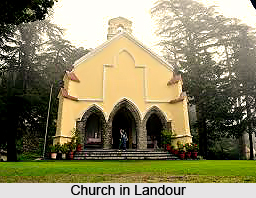 Architecture in Landour gives the clear picturisation of Romantic age England replica and the Indian summer retreat. This spot is now serving as the hill station and the hilly city, very near to Mussoorie.
Architecture in Landour gives the clear picturisation of Romantic age England replica and the Indian summer retreat. This spot is now serving as the hill station and the hilly city, very near to Mussoorie.
Landour is similar to other British era hill stations of Northern India. Since Mussoorie-Landour never rivalled Shimla in administrative, political or military terms, there are few official buildings to speak of.
The private homes are largely common, the era of British Government in India pastiches, with pitched roofs (often painted a dull red) and large verandahs are to give importance to the heavy monsoons. Most houses contain architectural echoes both of Home Counties England and of the resort towns of the Scottish Highlands. Many have well-kept gardens.
About the only architecturally significant building was The Castle on the aptly named Castle Hill, now part of Survey of India, where the deposed boy-king Duleep Singh of Punjab, the son of Maharaja Ranjit Singh, was often "kept" for convalescent purposes between 1849 and 1853. The Amir of Afghanistan too was in the town in quasi-exile at various times in the early 20th Century as the British officials engaged in their customary machinations of map-drawing and re-drawing across the Subcontinent.
A prominent local landmark was the Clock Tower at the start of Landour Bazaar. It was of little architectural merit, but informally marked the boundary between Landour and Mussoorie. This clock tower was demolished in 2011.
Landour has four churches, two of them distinctly Indo-Gothic in style of architecture. Of the four, two remain very much in use: Kellogg Church was built in 1903, once American Presbyterian, now non-denominational, and also home to the Landour Language School and the St. Paul`s Church which was built in 1840, once Anglican, now non-denominational in Char Dukan, where Jim Corbett`s parents, Christopher and Mary Corbett married on 13th October 1859. A third Methodist church in Landour Bazaar fell into disuse after the British era ended and was eventually seized by squatters for commercial purposes by way of `kabza`. The fourth church, which is atop Landour hill, is the once-Anglican St. Peter`s Church, latterly Catholic and now in disuse and occupied by squatters apparently with the `permission` of the church committee.



















